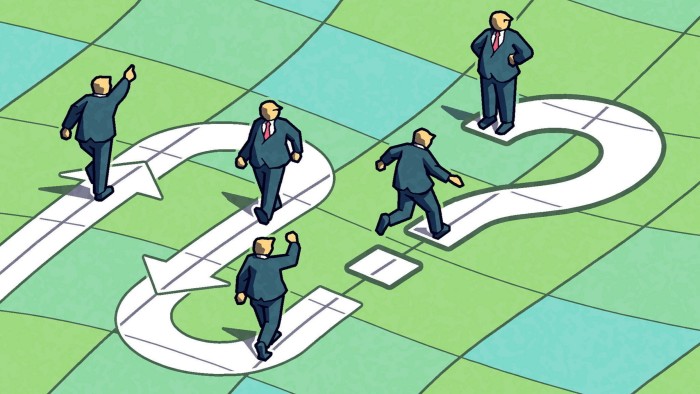Why Tariffs Alone Can’t Revitalize American Industry
As the U.S. government increasingly relies on tariffs to protect domestic industries, economists and policymakers warn that these measures—without complementary industrial policies—may fail to achieve long-term economic revitalization. While tariffs aim to shield American manufacturers from foreign competition, experts argue that sustainable growth requires investments in infrastructure, workforce development, and innovation. The debate highlights the need for a multifaceted approach to industrial policy in an era of global supply chain disruptions and geopolitical tensions.
The Limits of Tariffs as a Standalone Solution
Tariffs, which impose taxes on imported goods, have been a cornerstone of U.S. trade policy for decades. Recent administrations have used them to protect industries like steel, aluminum, and semiconductors. However, data from the Peterson Institute for International Economics shows that tariffs alone often lead to higher consumer prices and retaliatory measures without significantly boosting domestic production.
“Tariffs are a blunt instrument,” says Dr. Elena Rodriguez, a trade economist at the Brookings Institution. “They can provide temporary relief, but without concurrent investments in R&D, worker training, and supply chain resilience, their impact diminishes over time.” For example, the Section 232 tariffs on steel imports in 2018 initially increased domestic production by 6%, but growth plateaued within two years due to capacity constraints and skill shortages.
The Case for a Comprehensive Industrial Policy
A robust industrial policy goes beyond trade barriers to address systemic challenges. Key components include:
- Infrastructure modernization: Aging factories and transportation networks hinder efficiency.
- Workforce development: 2.1 million manufacturing jobs could go unfilled by 2030 due to skills gaps (National Association of Manufacturers).
- Technology adoption: Only 12% of U.S. manufacturers have implemented advanced automation (McKinsey & Company).
Countries like Germany and South Korea combine tariffs with long-term strategies, such as vocational training programs and public-private research partnerships. “The U.S. needs a playbook, not just a shield,” argues Michael Chen, CEO of a Midwest automotive supplier. “We’re competing against nations that subsidize innovation and streamline permitting—tariffs alone won’t level that playing field.”
Balancing Protectionism and Global Competition
While some industries benefit from tariffs, others face unintended consequences. A 2023 study by the Federal Reserve found that tariff-protected sectors saw 8% higher input costs due to retaliatory duties on U.S. exports. Meanwhile, the Semiconductor Industry Association reports that chip tariffs slowed production expansion by deterring foreign equipment purchases essential for fabrication plants.
Proponents counter that strategic tariffs, like those under the CHIPS and Science Act, can work when paired with subsidies. “The CHIPS Act’s $52 billion in funding shows the power of combining financial incentives with trade measures,” notes tech policy analyst Rachel Nguyen. However, she cautions that “without workforce housing and STEM education pipelines, even these investments may underdeliver.”
Pathways to Sustainable Industrial Growth
Experts propose a three-pronged approach to complement tariffs:
- Regional innovation hubs: Cluster development around emerging technologies like clean energy.
- Reskilling initiatives: Expand apprenticeship programs in advanced manufacturing.
- Supply chain diversification: Reduce reliance on single-source materials through stockpiling and ally-shoring.
The Biden administration’s “Investing in America” agenda attempts this balance, directing $400 billion toward infrastructure and clean energy. Early results show promise—battery manufacturing capacity grew 15-fold since 2020—but sustaining momentum requires bipartisan support.
The Road Ahead for U.S. Industrial Policy
As Congress debates reauthorizing the Trade Expansion Act, the discussion has shifted from whether to use tariffs to how they fit into a broader strategy. With global trade tensions rising and climate goals demanding industrial transformation, piecemeal solutions risk leaving the U.S. economy vulnerable.
“History teaches us that industrial leadership requires patience and coordination,” concludes Rodriguez. “The 19th-century Morrill Act didn’t just tax imports—it built land-grant universities. That’s the scale of vision we need today.” For businesses and policymakers, the message is clear: Tariffs may guard the door, but rebuilding American industry requires unlocking the full toolkit.
To stay updated on evolving trade policies, subscribe to our industry newsletter for monthly analysis and expert commentary.
See more CCTV News Daily
